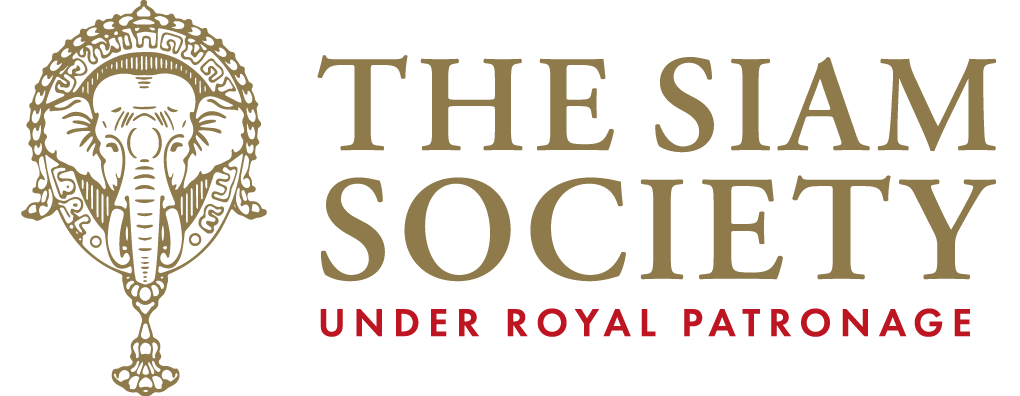
เล่าเรื่องภูมิหลังของย่านสุขุมวิท “ภายใต้โครงการความเป็นธรรมสภาพภูมิอากาศในมิติวัฒนธรรมของชุมชนเมือง”
(For English, please scroll down)
เล่าเรื่องภูมิหลังของย่านสุขุมวิท
โดย คุณอวยพร เกิดช่วย ที่ปรึกษาอาวุโส สยามสมาคม ในพระบรมราชูปถัมภ์
ร่วมสนทนาโดย คุณวิษณุ เอื้อชูเกียรติ หัวหน้าแผนกพิทักษ์มรดกสยาม สยามสมาคมฯ
ภายใต้โครงการ “ความเป็นธรรมสภาพภูมิอากาศในมิติวัฒนธรรมของชุมชนเมือง”
วันที่ 22 พฤษภาคม พ.ศ. 2568 ณ สยามสมาคมในพระบรมราชูปถัมภ์

คุณอวยพรเริ่มต้นเล่าว่าพื้นเพตนเป็นคนจังหวัดนครศรีธรรมราช เริ่มเข้ามาทำงานที่สยามสมาคมฯ เมื่อปี พ.ศ. 2513 ในตำแหน่งเลขานุการบริหาร ได้เห็นถึงความเปลี่ยนแปลงของพื้นที่โดยรอบมาโดยตลอด
สยามสมาคมฯ เมื่อแรกก่อสร้างขึ้นบนพื้นที่ปัจจุบันในช่วงเปลี่ยนแปลงการปกครองนับเป็นอาคารคอนกรีตหลังแรกบนถนนอโศก ในสมัยที่คุณอวยพรเข้ามาทำงาน “อโศก” ยังคงมีลักษณะเป็นซอยเช่นเดียวกับซอยข้างเคียงอื่นๆ บนถนนสุขุมวิทและตัวสมาคมฯ ก็มีลำรางสาธารณะทอดยาวผ่านด้านหน้า อย่างไรก็ตาม ตลอดระยะเวลาที่ผ่านมาถนนอโศกและพื้นที่โดยรอบได้ถูกปรับสภาพอยู่หลายครั้ง ตั้งแต่เมื่อมีการเวนคืนที่ดินและขยายถนนเพื่อทำถนนรัชดาภิเษก มาจนถึงครั้งหลังสุดเมื่อมีการก่อสร้างรถไฟฟ้าใต้ดิน

การเปลี่ยนแปลงของพื้นที่บริเวณนี้เห็นได้อย่างชัดเจน คุณอวยพรยังยกตัวอย่างเพิ่มเติมว่าบริเวณถนนเพชรบุรีก็มีสภาพที่แตกต่างจากในอดีตมากเช่นกัน จากพื้นที่ที่เคยเป็นท้องทุ่งและเต็มไปด้วยต้นตาลขึ้นอยู่ทั่วไป ภายหลังการสร้างถนนเพชรบุรีตัดใหม่ บริเวณดังกล่าวได้เปลี่ยนแปลงไปเป็นแหล่งสถานบันเทิงสำหรับทหารอเมริกันในช่วงสงครามเวียดนามและกลายสภาพเป็นเมืองอย่างที่เห็นในปัจจุบัน
ถนนอโศกภายหลังการก่อสร้างรถไฟฟ้าทั้งใต้ดินและบนดินทำให้วิถีชีวิตของคนทำงานในย่านนี้เปลี่ยนแปลงไป ผู้คนหันมาใช้รถไฟฟ้าและนั่งรถประจำทางน้อยลงมาก ขณะที่บริเวณหน้าสยามสมาคมฯ ก็มีจำนวนคนเดินเท้าและนักท่องเที่ยวผ่านไปผ่านมาเพิ่มขึ้น ทั้งที่แต่เดิมบริเวณนี้ไม่ค่อยมีผู้คนแวะเวียนผ่านมามากนัก ในแง่นี้คุณอวยพรยอมรับว่าการมีรถไฟฟ้าช่วยเพิ่มความสะดวกสบายต่อวิถีชีวิตในย่านนี้มากขึ้น

อย่างไรก็ตาม การเปลี่ยนแปลงสภาพภูมิอากาศอันเนื่องมาจากภาวะโลกร้อนในปัจจุบันสร้างความลำบากในการใช้ชีวิตให้กับชาวอโศกอย่างเห็นได้ชัด การก่อสร้างอาคารสูงห้อมล้อมทำให้สยามสมาคมฯ กลายเป็นพื้นที่ “หลุม” และพื้นที่โดยรอบก็ประสบปัญหาอากาศไม่ถ่ายเท โชคดีที่บางส่วนของสมาคมฯ ที่ปลูกเป็นแนวต้นหมากนั้นตั้งอยู่ระหว่างอาคารสูงทำให้ยังคงได้รับกระแสลมแรงจากช่องลมแคบๆ อยู่เป็นปกติ แต่การขาดพื้นที่สีเขียวย่อมเป็นอุปสรรคแก่ผู้คนที่ใช้ชีวิตอยู่บนอาคารสูงย่านสุขุมวิทในปัจจุบันด้วย คุณอวยพรกล่าวว่าสำหรับคนเหล่านี้ “ถ้าเผื่อวันใดแอร์เสีย แทบอยู่ไม่ได้เลย”

ขณะที่การแก้ปัญหาสภาพอากาศที่เปลี่ยนไปไม่ใช่เรื่องง่าย ปัจจุบันราคาที่ดินบนถนนอโศกสูงมาก ตามมาด้วยความพยายามทุกวิถีทางที่จะทำให้ที่ดินของตนมีมูลค่าสูงสุด คุณอวยพรตั้งคำถามว่าด้วยมูลค่าของที่ดินที่สูงขนาดนี้ ใครจะอยากเจียดพื้นที่ของตนไปปลูกต้นไม้?
ปัญหาหลายอย่างแก้ไขได้ยาก คุณอวยพรยกตัวอย่างอาคารสูงบางแห่งที่มีผู้อาศัยอยู่มากในบริเวณนี้ แม้ว่าศาลจะมีคำพิพากษาและให้ทำการรื้อถอนออกไปแล้ว แต่ก็มีเสียงคัดค้านจากผู้อยู่อาศัยทำให้อาคารยังคงตั้งอยู่ที่เดิม ก่อให้เกิดคำถามที่ว่าภาครัฐจะมีศักยภาพในการแก้ปัญหาเหล่านี้หรือไม่ เช่นเดียวกับปัญหาอื่นๆ ที่ดูจะยังขาดหนทางแก้ไขที่เหมาะสม เช่น ปัญหาผังเมืองของกรุงเทพมหานคร

ปัจจุบันสยามสมาคมฯ ยังคงเป็นแหล่งสำคัญแทบจะแหล่งเดียวที่พยายามรักษาพื้นที่สีเขียวเอาไว้บนถนนอโศกท่ามกลางพื้นที่ที่กลายสภาพไปเป็นย่านอาคารสูงแทบทั้งหมดแล้ว คุณอวยพรยอมรับว่าการปรับตัวเป็นสิ่งจำเป็น และแม้ว่าเราอาจไม่สามารถแก้ไขปัญหาภาวะโลกร้อนได้ทั้งหมด แต่ก็เห็นว่าภาครัฐจำเป็นต้องเพิ่มพื้นที่สีเขียวและสวนสาธารณะให้มากขึ้น ขณะที่ประชาชนเองก็สามารถมีบทบาทในการช่วยกันแสดงความคิดเห็นอย่างมีเหตุมีผลต่อสาธารณะให้ปรากฏ

___
โครงการนี้จัดทำโดย
สยามสมาคมในพระบรมราชูปถัมภ์
สถาบันชุมชนท้องถิ่นพัฒนา
Thai Climate Justice for All (TCJA)
มหาวิทยาลัยศรีนครินทรวิโรฒ
Hear and Found Co., Ltd.
.
Memories of Sukhumvit
A talk by Khun Euayporn Kerdchuay, Senior Advisor to The Siam Society Under Royal Patronage
In conversation with Khun Visanu Euerchukiati, Chairperson of the Siamese Heritage Trust, The Siam Society
Conducted as part of the project “Culture and Climate Justice in Urban Communities”
22 May 2025, at The Siam Society Under Royal Patronage
Originally from Nakhon Si Thammarat Province, Khun Euayporn began by sharing with the audience that he first joined The Siam Society as an Executive Secretary in 1970. Since then, he has witnessed the continual transformation of the surrounding area.
When The Siam Society was first established on its current grounds during the political transition period, its building was the first concrete structure on Asoke Montri Road. At the time when Khun Euayporn first started working at the Society, “Asoke” Road was still a small lane—much like the other alleyways branching off Sukhumvit Road—and a public canal ran in front of the Society. Over time, however, Asoke and the surrounding areas have undergone continuous changes, starting with land expropriation and road expansion for the construction of Ratchadaphisek Road, and more recently, the development of the MRT underground train system.
The transformation of the area is striking. Khun Euayporn further noted how Phetchaburi Road has also changed drastically over time. What were once open fields dotted with sugar palms became, after the construction of New Petchburi Road, a hub of entertainment catering to American soldiers during the Vietnam War, eventually evolving into the urban landscape we see today.
The construction of both the BTS and the MRT systems has significantly changed the lifestyle of people working in the Asoke area. More commuters now use the skytrain, and the number of those relying on buses has dropped considerably. At the same time, the area in front of The Siam Society has seen a noticeable increase in foot traffic and tourists, whereas previously, few people passed by. In this regard, Khun Euayporn acknowledged that the BTS system has brought considerable convenience to daily life in the area.
However, the impacts of climate change now present real challenges for Asoke residents. The construction of surrounding high-rises has turned The Siam Society into something of a “basin” where airflow is restricted. Fortunately, some parts of the Society, particularly the rows of areca palms planted between tall buildings, still allow breezes to be channelled through narrow wind corridors. Nonetheless, the lack of green space presents serious obstacles for those living in the high-rise buildings across the Sukhumvit area. As Khun Euayporn observed, for such residents, “if the air conditioning breaks down, life becomes nearly unbearable.”
Addressing these climate-related issues is no easy task. Land prices along Asoke Montri Road are now extremely high, leading to every effort being made to maximise the value of one’s land. Khun Euayporn posed a pointed question: with land value being what it is today, who would be willing to sacrifice even a portion of their land to plant trees?
Many problems remain difficult to resolve. Khun Euayporn cited the example of certain high-rise buildings in the area, which, despite a court ruling ordering their demolition, have remained standing due to opposition from residents. This raises a broader concern: does the government have the capacity to enforce such rulings and effectively address these kinds of issues? Similar questions apply to other long-standing urban challenges, such as the issue of Bangkok’s city planning, which still lacks clear, effective solutions.
At present, The Siam Society stands out as one of the very few remaining institutions on Asoke actively working to preserve green space, in an area that has otherwise been almost entirely overtaken by high-rise development. Khun Euayporn acknowledged that adaptation is necessary in the face of ongoing change. While it may not be possible to solve the climate crisis in its entirety, he emphasised the responsibility of the state to increase the number of green spaces and public parks. At the same time, members of the public should be encouraged to take an active role by voicing thoughtful, well-reasoned opinions in the public sphere, helping to keep these issues visible and on the agenda.
___
This project was carried out by
The Siam Society Under Royal Patronage
Local Development Foundation (LDF)
Thai Climate Justice for All (TCJA)
Srinakharinwirot University
Hear and Found Co., Ltd.
